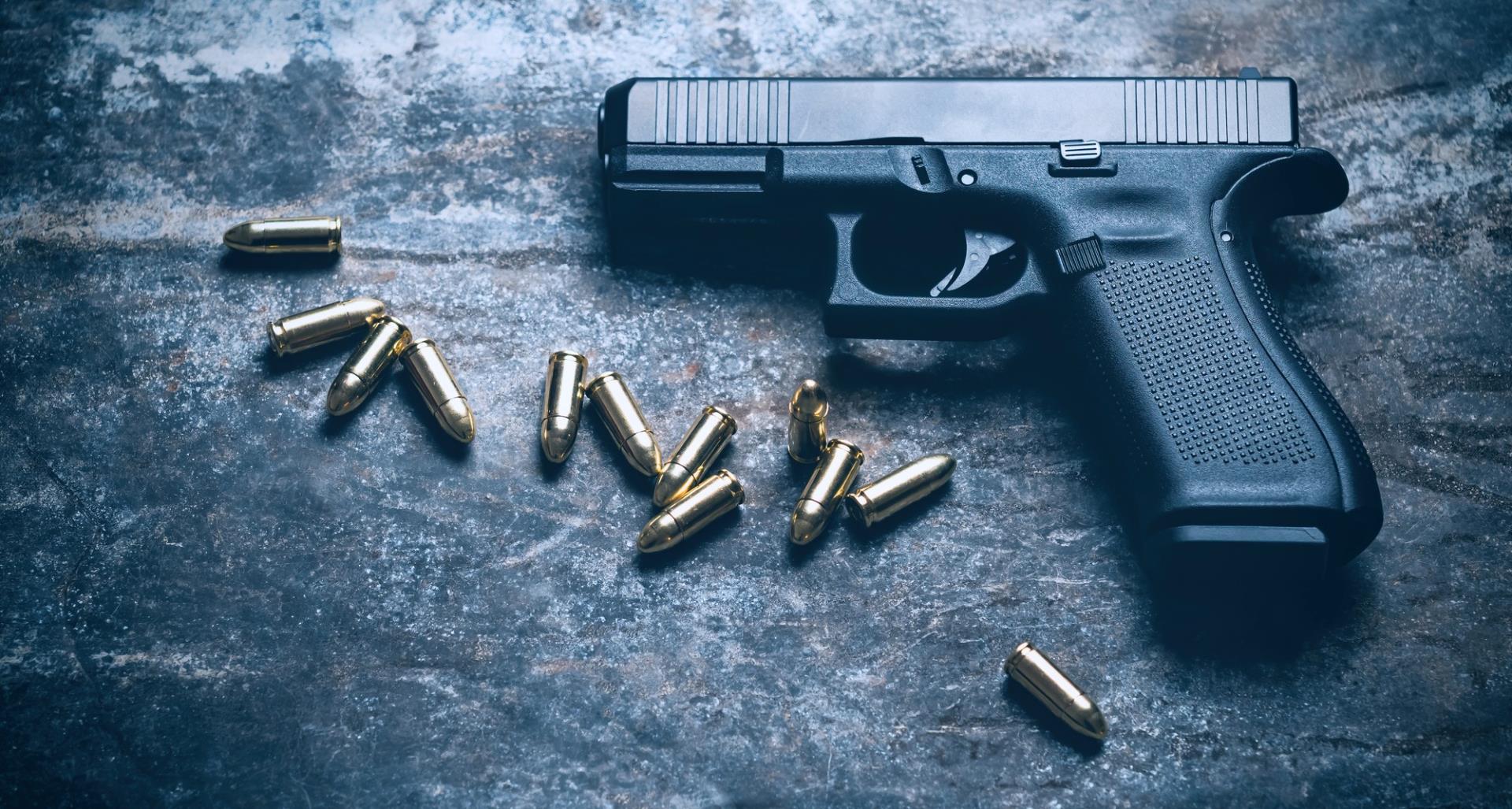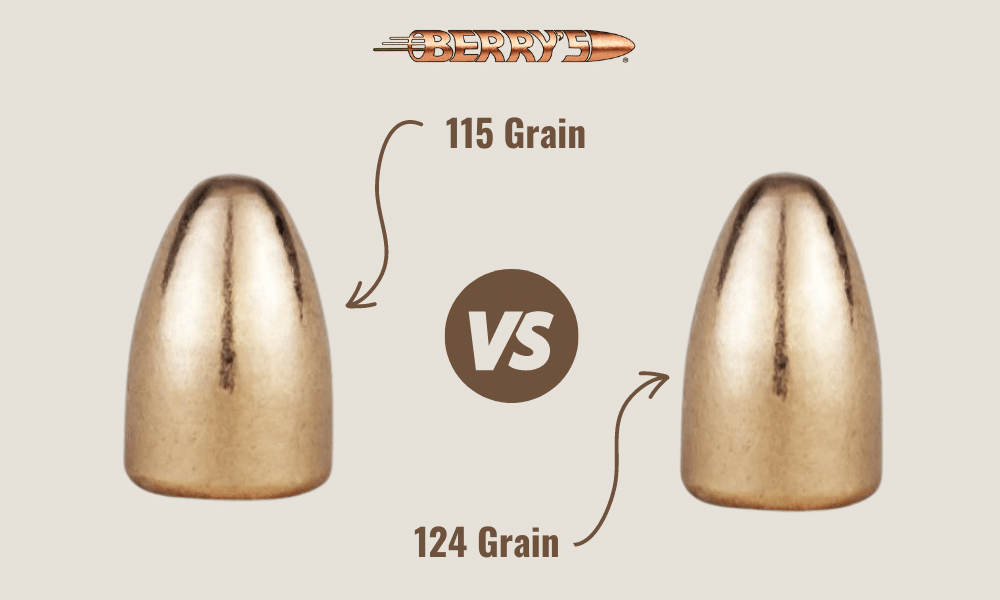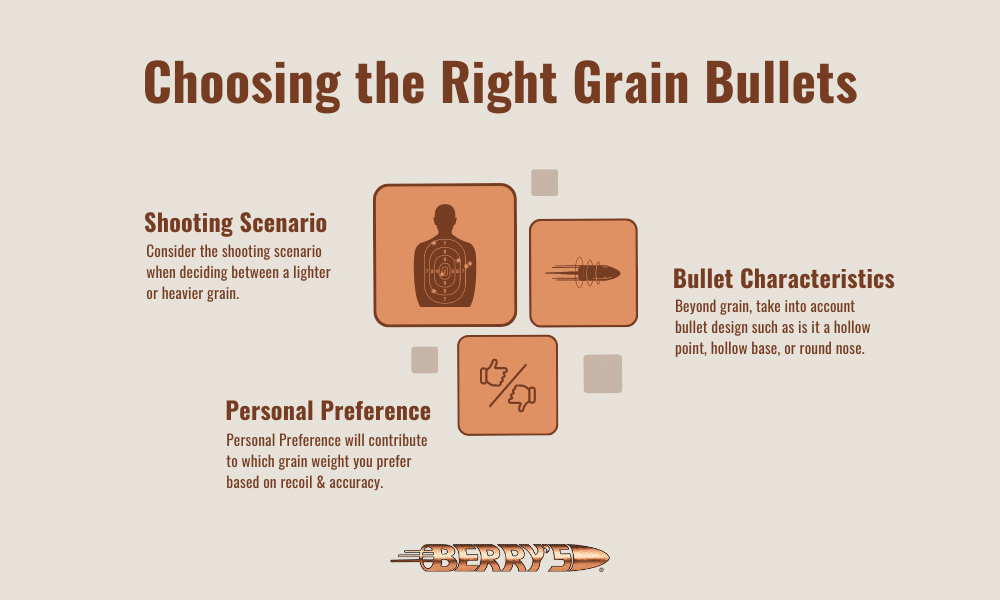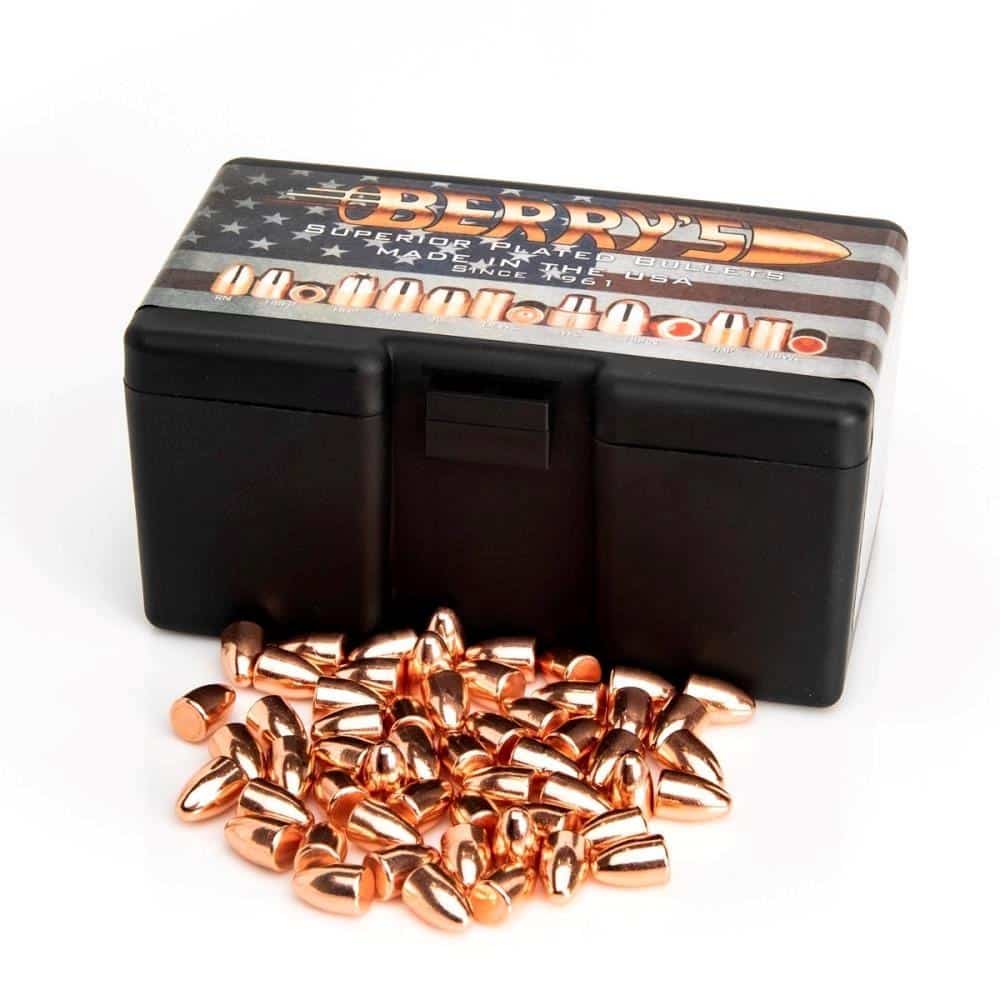Your cart is currently empty!

115 Grain vs 124 Grain: What’s the Difference?
Today, we are diving into a common question posed by our customers — what is the difference between 115 grain and 124 grain bullets? The world of bullets can be confusing for many, especially when it comes to understanding the significance of bullet weight (measured in grains). As we break down and analyze these two popular bullet weights, it’s crucial to remember that the difference is nominal and likely something you wouldn’t notice unless you’re an avid shooter.
The focus of our comparison will be taking a look at these differences through the lens of 9mm bullets and shedding light on the performance variance when you swap a 115 gr bullet with its slightly heavier 124 gr counterpart.
By the end of this article, our goal is not to lead you towards one grain load or the other. Instead, we’d like to make sure that you’re informed of these subtle differences, so you can make the best possible choice for your shooting needs. So, let’s dive in and start with the fundamentals – what exactly is grain, and how does it impact bullet performance?
Understanding Bullet Grain: 115 vs 124 Grain – What Exactly is the Difference?

WHAT IS BULLET GRAIN?
Before we dive into the deeper details of our comparison, let’s first clear up what grain means in the context of bullets. Simply put, grain (denoted gr), is a unit of weight traditionally used to measure bullets. It is equal to 1/7000th of a pound. Hence, when someone says they’re using 115 gr or 124 gr 9mm ammo, they are referring to the weight of the actual bullet (or projectile) part of the ammunition that is fired from the gun.
SO WHAT DIFFERENCE DOES THAT 9 GRAIN MAKE?
Now that we’re clear on what grain means, let’s tackle what differentiates a 115 gr bullet from a 124 gr bullet. The difference between these two comes down to a mere 9 grains – equivalent to just 0.019 ounces. This might lead you to question if a variance this marginal can introduce any distinct difference in shooting performance. In an ideal world, this slight weight shift can affect several aspects such as recoil, accuracy, and trajectory.
WHEN IS IT IMPORTANT TO FOCUS ON SLIGHT SHIFTS IN GRAIN?
However, many shooters would argue that these performance nuances are barely noticeable. Unless you find yourself in a competitive shooting scenario where fractional improvements contribute to tangible benefits, you likely won’t detect any substantial contrast between the two.
Performance Impact: Repetition vs Velocity
Understanding the difference between 115 grain and 124 grain bullets extends beyond the physical weight. Let’s explore two critical performance factors: recoil and velocity. Both of these factors play an essential role in the trajectory, accuracy, and overall shooting experience.
DIFFERENCES IN RECOIL
Starting with the recoil (technically known as the recoil impulse) the 115 gr is a lighter bullet and therefore is expected to have less kickback when fired. This lighter recoil can enable quicker follow-up shots, which could mean an edge in speed-oriented shooting sports or defensive situations requiring quick threat response.
DIFFERENCES IN VELOCITY & ACCURACY
Moving on to velocity, here’s where the heavier 124 gr bullet might have an edge. While a heavier bullet is generally associated with a lower muzzle velocity, it maintains momentum better downrange, which results in a higher terminal velocity (top speed of the projectile; often speed of the bullet as it hits the target). A higher terminal velocity can translate to better penetration, which is considered positive for self-defense purposes and small game hunting. This increase in velocity can also be attributed to better accuracy, with the heavier 124-grain bullet maintaining its trajectory over a longer distance.
SEVERITY OF THESE DIFFERENCES IN RECOIL & VELOCITY
A key point to remember is that factory loads for 115 gr bullets are usually loaded to higher velocities than 124 gr bullets. This higher velocity somewhat offsets their possible disadvantage in downrange momentum. Let’s be upfront – the velocity differences between these two grain weights are minimal and are only likely to be of concern to professional shooters or maybe law enforcement officers. Likewise with recoil, many will argue that the recoil difference between a 115 gr and 124 gr load is difficult to detect unless you’re a highly experienced competition shooter. Having detailed forum community findings and personal experiences of various shooters worldwide, we can confidently state that the performance differences are negligible in most cases.
Choosing the Right Bullets: Purpose and Preference
While we’ve noted the performance distinctions between 115 grain and 124 grain bullets, the decision to choose one over the other often rests on two critical factors: the intended purpose of shooting and the personal preference of the shooter.

CONSIDERING THE SHOOTING SCENARIO
Different shooting scenarios call for different attributes in a bullet. For instance, if your primary focus is target shooting, you might lean towards a lighter 115 gr bullet. The slightly less felt recoil could offer you the ability to maintain a steadier aim for repeated shots. However, if you’re preparing for a self-defense situation, the extra penetration ability that comes with the slightly heavier 124 grain bullet could be more attractive.
CONSIDER OTHER BULLET CHARACTERISTICS
It is also worth noting that bullet design, such as hollow point, hollow base, round nose, or others, can deliver different effects on the target regardless of the grain. For example, a 9mm 115 gr hollow base will deliver different results than a 9mm 124 gr hollow point in terms of terminal ballistics or penetration. Make sure to consider all aspects of a bullet’s design before making a purchase decision.
CONSIDER PERSONAL PREFERENCE
However, it’s essential to remember that these scenarios represent the margins of shooting experiences. For the average shooter, the 9-grain difference might bring to minor a change to significantly alter your shooting experience. Hence, personal preference is just as influential, if not more so, in choosing between bullets of similar weights.
Whether you prefer the 115 gr bullet for its minimally lesser felt recoil or the 124 gr bullet for its slightly better penetration, the best bullet for you is the one you can shoot comfortably and confidently.
How Berry’s Bullets Can Help
As we wrap up the examination of 115 grain and 124 grain bullets, we hope that this comparison has succeeded in providing a deeper understanding and a clear perspective. And yes, while we have emphasized that the 9-grain difference between the two is largely negligible for the average shooter, Berry’s Bullets offers a variety of superior plated bullets, fine-tuned to match diverse shooting needs.

OVER 60 TYPES OF SUPERIOR PLATED BULLETS
We know that bullet choice is a concerted blend of purpose, performance, and personal comfort. This is why Berry’s Bullets offers both 115 gr and 124 gr bullets among our wide range of over 60 types of superior plated bullets. Our relentless pursuit of quality has driven us to provide our customers with precise, high-quality bullets that contribute to better performance regardless of grain weight or bullet type.
Whether your concern aligns with recoil, velocity, accuracy, or penetration, we have a bullet for you. Our offerings are not limited to 115 gr and 124 gr but span a variety of grain weights, delivering products fine-tuned to various shooting experiences.
Our bullets offer not just optimal performance but absolute reliability too. As a shooter, the last thing you want is unpredictability or inconsistency. Berry’s Bullets pledges to deliver bullets that you can trust each time you pull the trigger – no matter your choice of grain weight.
